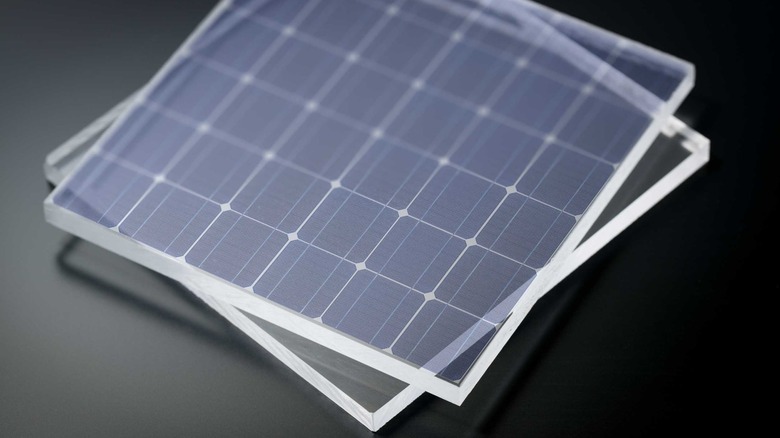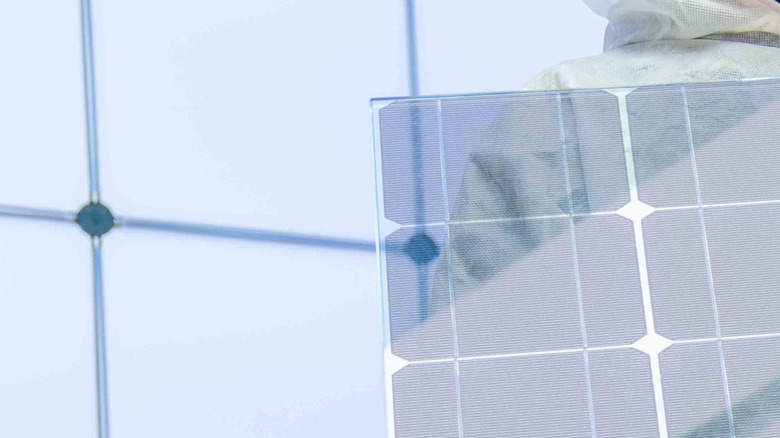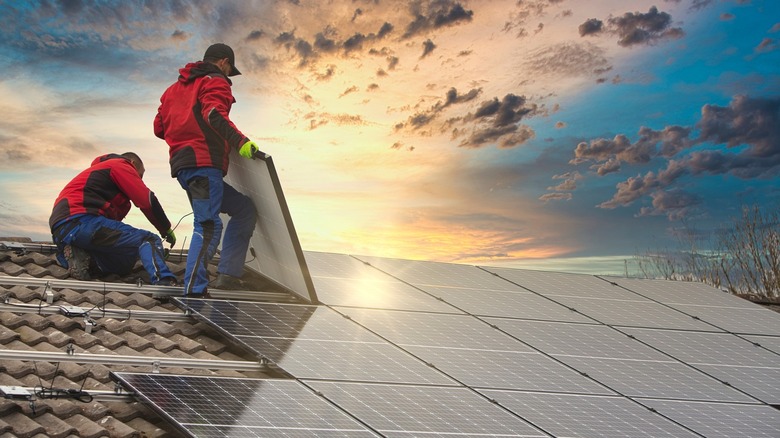Transparent Solar Panels: What Do They Cost, And Are There Any Disadvantages?
In a world that relies on batteries and energy supplies, there's something quite attractive about the idea of a transparent surface that can harness the power of the sun. Think about it — the windows of your home can be individualized solar panels, eliminating the need for those unsightly installations atop your roof. Even your smartphone's screen might be a solar panel, drawing in and storing power as needed, virtually making wall and wireless chargers obsolete.
This may have been a fantastical concept more than a decade ago, but in August 2014, researchers from Michigan State University introduced the world to a transparent luminescent solar concentrator. In layman's terms, it is a solid, transparent material that can mimic the functions of a solar panel.
While transparent solar panels aren't as commercially available to the consumer as standard panels, being a relatively new technology, several companies are pioneering the use of these see-through panels. Some call it photovoltaic glass. Others use the easier-to-remember "solar glass," but they all virtually do the same thing, maybe with varying degrees of transparency.
As a brilliant twist on a modern cost- and environmentally-conscious solution, transparent solar panels can be a game changer. Some questions may linger in the back of your mind, though, and we're here to help clear them up.
How much do transparent solar panels cost?
This isn't the easiest question to answer, primarily because residential solar glass isn't all that widespread. The technology is being implemented in commercial and agricultural solutions, so any costs to homeowners will mostly be educated estimates.
According to Vivian Loftness, a professor at Carnegie Mellon's Wilton E. Scott Institute for Energy Innovation, a single window installation may cost $1,000. Considering how many windows modern homes have, the transparent solar panel conversion could easily start at $10,000.
Windows aren't the only thing you may be eyeing for solar glass. For example, you may consider swapping out your skylights for solar alternatives. According to Solar Tech Advisor, changing to a transparent panel could cost upwards of $25 per square foot. That's five times the cost of a traditional, roof-mounted solar panel.
Though glass solar panels may be less durable and more expensive than conventional panels, Loftness notes that they should last at least 50 years. Estimates for rooftop panels give them about 25 to 30 years before needing to be replaced.
What are the biggest disadvantages of transparent solar panels?
We can rattle off dozens of different benefits of solar glass, such as allowing agriculturalists to build self-reliant greenhouses that can supply plant life with the sunlight they need while generating their own power.
Unfortunately, there are a few things to consider before getting too excited about this technology. The biggest drawback is the amount of power they can produce. Compared to traditional solar panels, transparent (or even semi-transparent) panels are less capable.
According to Solar Magazine, the maximum efficiency of glass panels is around 10%, meaning they only convert about 10% of the light hitting them into power. As of 2020, the highest recorded efficiency for traditional solar cells is 39.5%. Residential panels tend to top out at 20%. In 2020, engineers believed they could eventually achieve 80% efficiency.
Since efficiency is lower, you'll need more transparent panels than traditional solar cells. Considering the higher cost for glass panels, you're looking at a rather considerable start-up cost for something that may not offset your power consumption nearly as much. At that rate, it becomes more about the aesthetics of solar cell installations and less about the practical implementation.
Additionally, since glass panels are less efficient, they'll be more reliant on continuous sunlight. Rainy days and cloudy weather will affect their performance more than rooftop panels, meaning regions with significant rainfall, such as the Pacific Northwest, may not see the full benefit of the transparent model.
Will transparent solar panels replace rooftop installations?
While a future without rooftop installations sounds nice, some experts believe it's further off than you may hope. It all comes down to efficiency, and as stated by Loftness, "I don't actually see in the next 10 years that we will think of [solar] windows as an alternative to rooftop photovoltaic."
Loftness' concern stems from how inefficient the current solar glass model is, leading her to believe that the transparent option will be more of a supplement. How it will work in the average household remains a question, but it's possible the technology could be more contained in how it's used. For example, the glass could be installed into a window frame with a built-in power outlet for charging household devices.
This does bring up another concern, as current homes aren't wired for glass solar panels. Rooftop installations can be more easily hardwired into the home's power supply, but transparent panels meant to offset electricity costs will require wiring through window frames that connect and eventually feed into the house.



